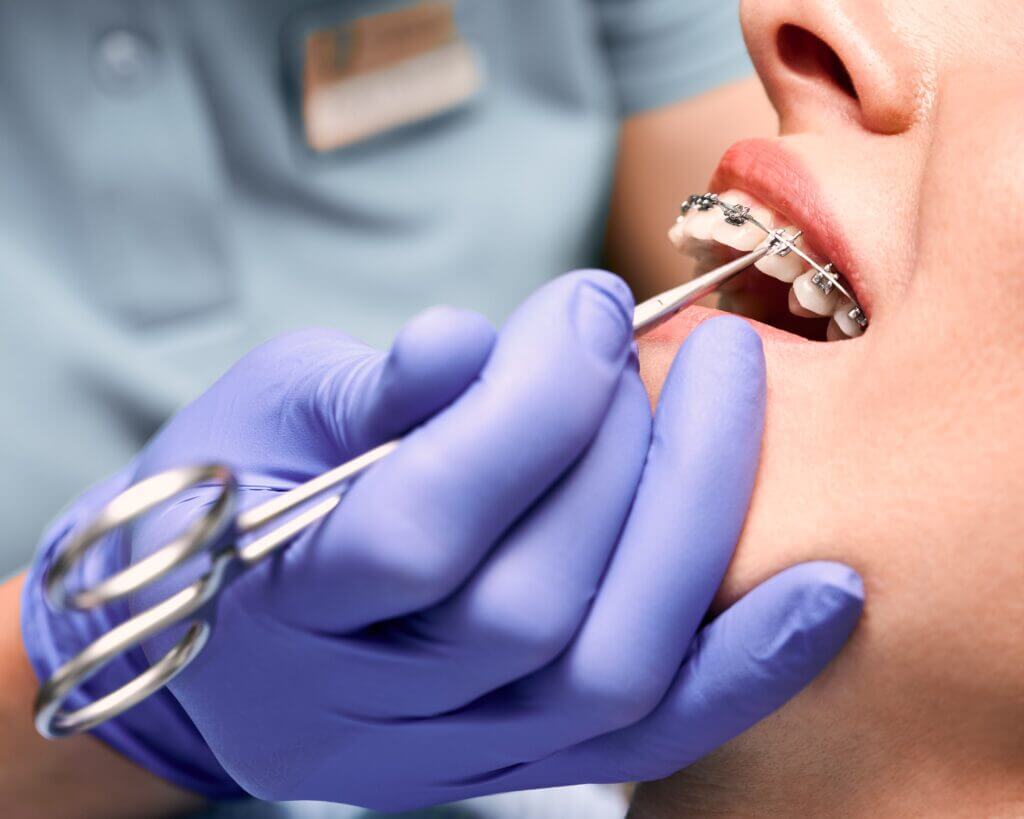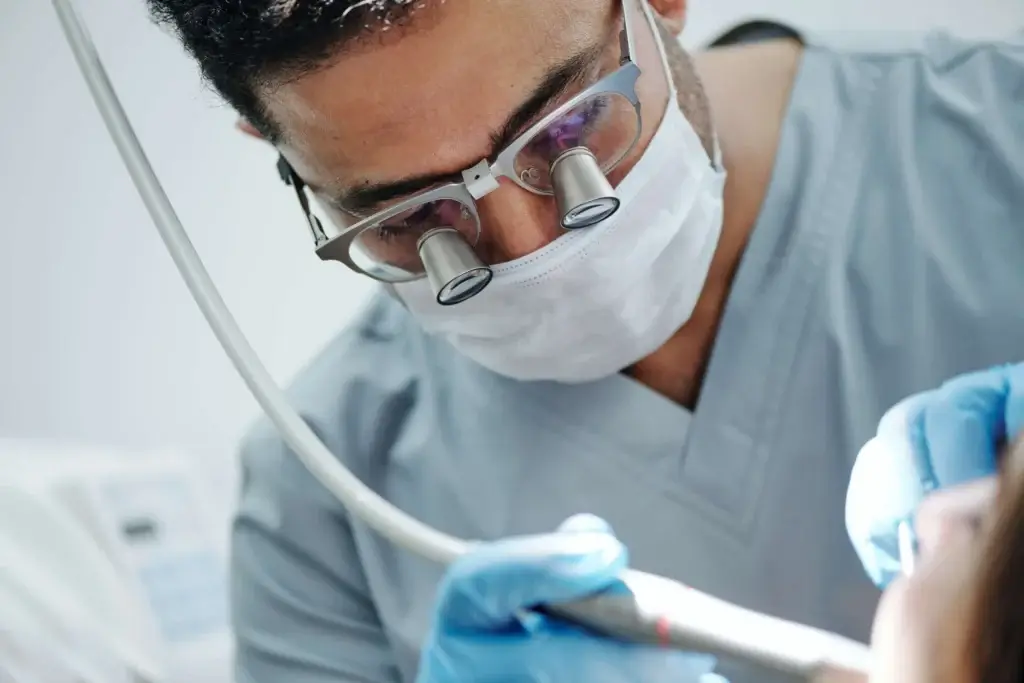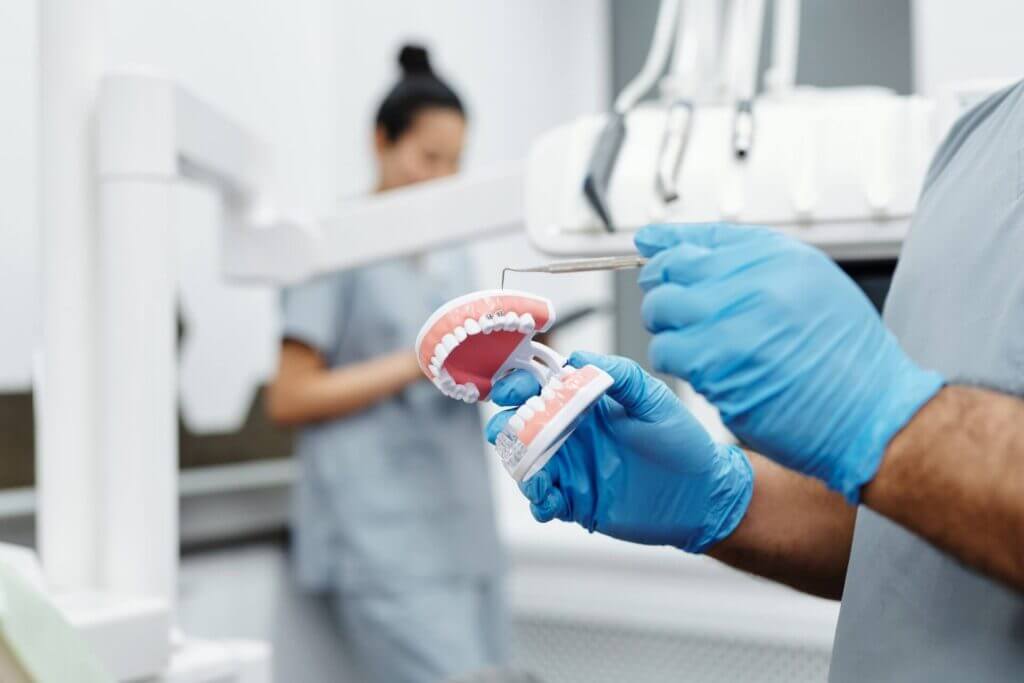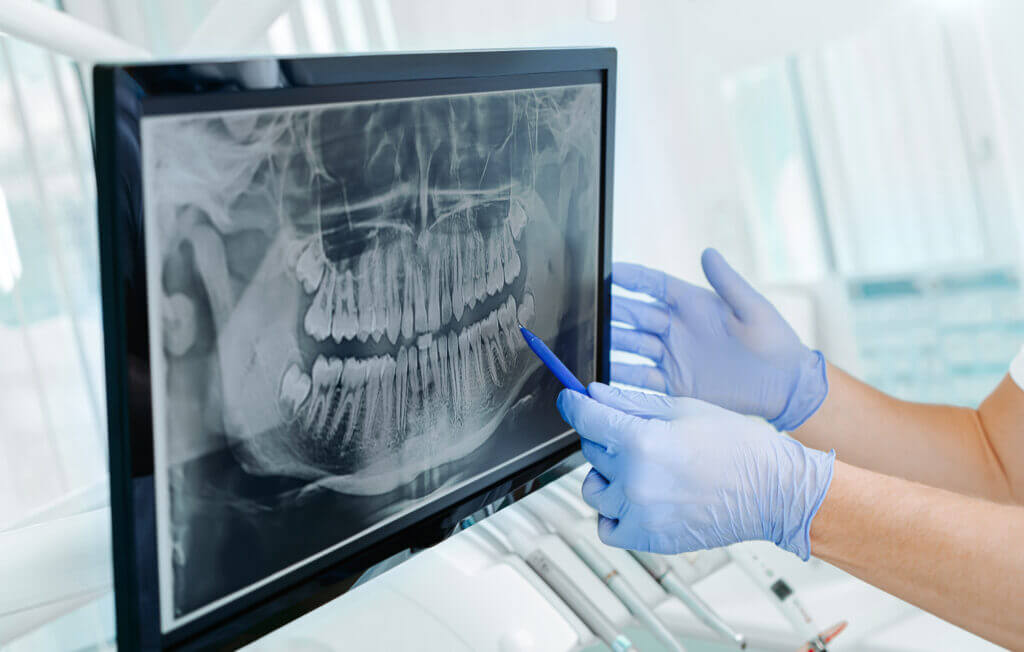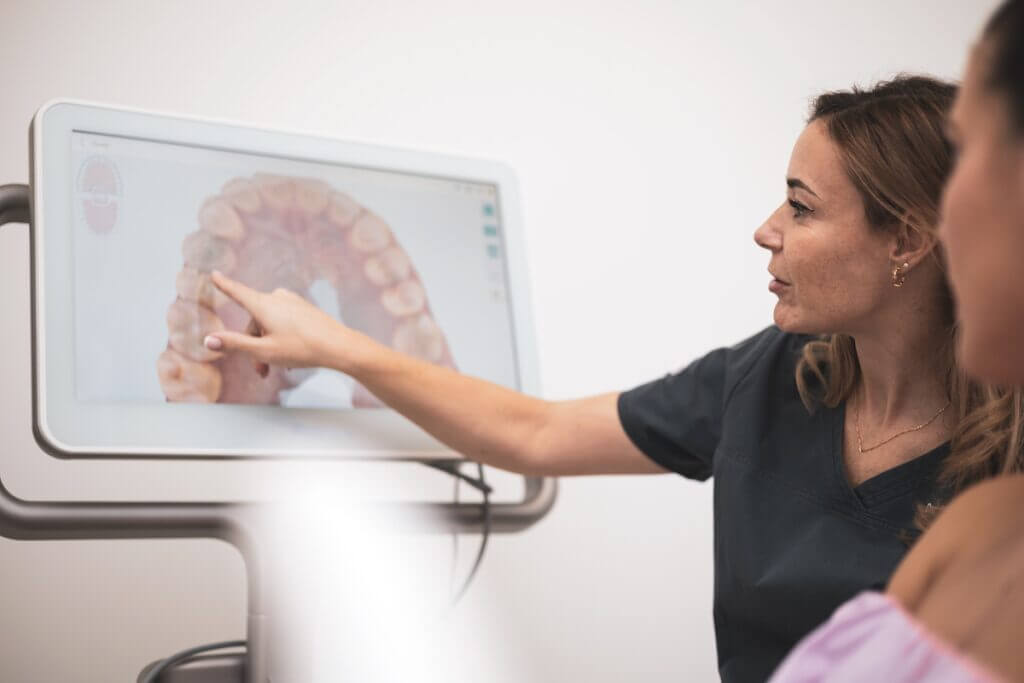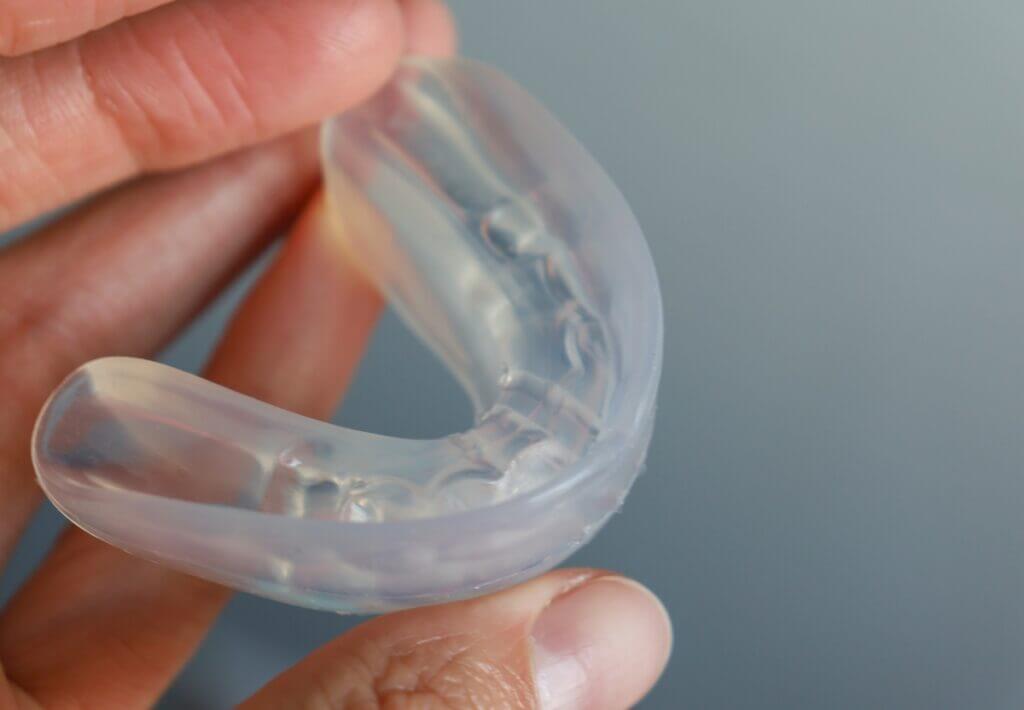Jaw Joint Disorders and Treatments
TREATMENTS
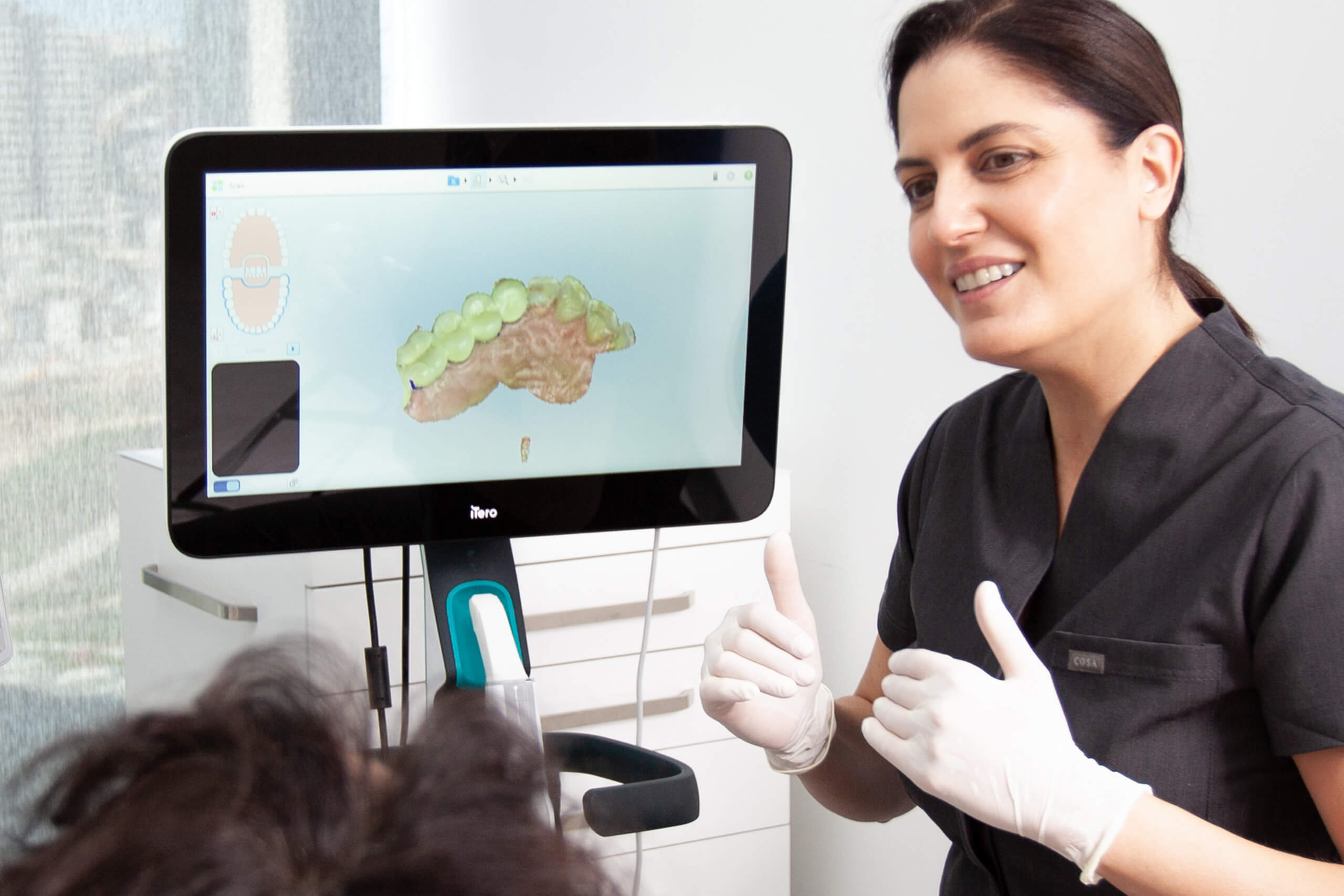
Temporomandibular joint disorders or jaw joint disorders refer to diseases affecting the joint that connects the lower jaw to the skull bones. These disorders can cause pain and dysfunction in the jaw joint and the muscles that control jaw movements. Temporomandibular joint disorders can be caused by impact to the jaw, teeth clenching or grinding, malocclusion of the teeth, stress or a combination of these factors.
The following signs can be seen in diseases of the jaw joint:
- Pain or tenderness in the jaw joint area: Pain may be limited to the jaw joint or may radiate to the face, neck and shoulders.
- feeling of difficulty or discomfort when chewing: This can range from mild discomfort to severe pain.
- noise from the jaw joint: These sounds can occur when opening or closing the mouth.
- locking of the jaw: In some cases, the jaw may remain locked in the open or closed position.
- muscle contraction: This can occur in the muscles of the jaw, face and neck and can cause discomfort and restriction of jaw movement.
Treatments for jaw joint disorders are aimed at improving jaw function and relieving symptoms. Some of the treatment options used are as follows:
- non-invasive treatments: Self-administered measures such as applying heat or cold to the jaw, avoiding hard foods, practicing relaxation techniques to reduce stress and avoiding clenching or grinding.
- Medications: Over-the-counter painkillers can be used to control the pain and inflammation associated with jaw joint diseases. In more severe cases, your doctor may recommend other medications such as muscle relaxants.
- Physical therapy: The physical therapist can recommend various exercises and stretches to facilitate jaw movements, strengthen the muscles supporting the jaw and facilitate relaxation.
- Dental treatments: Depending on the underlying cause of temporomandibular joint disease, various dental treatments may be required. These treatments may include orthodontic treatments to correct malocclusion, joint appliances, splints to prevent excessive load on the joint in people with clenched teeth, or prosthetics to replace missing teeth to ensure closure.
- Stress management: Stress can aggravate jaw joint disorders. Counseling, relaxation exercises or biofeedback therapy can therefore be useful to reduce tension in the jaw and to cope with stress.
- Surgical treatments: For severe jaw joint disorders that do not respond to less invasive treatments, interventions such as arthroscopy, joint replacement surgery or orthognathic surgery to correct the bite may be considered.
The treatment of diseases of the temporomandibular joint is individualized as each patient has different symptoms and underlying causes of the disease. Dentists, physiotherapists and other specialties should work in cooperation to improve the quality of life of patients and to eliminate joint problems.
